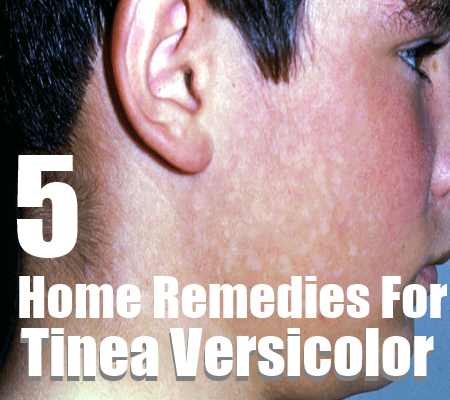Difference between vitiligo and tinea versicolor. Distinguishing Tinea Versicolor and Vitiligo: A Comprehensive Guide on Skin Pigment Symptoms and Treatment
What is the difference between tinea versicolor and vitiligo? Explore the causes, symptoms, and treatment options for these common skin pigmentation disorders.
Understanding Tinea Versicolor
Tinea versicolor, also known as pityriasis versicolor, is a common fungal infection caused by an overgrowth of the Malassezia yeast on the skin. This yeast normally lives on the skin, but an imbalance can lead to the development of a rash with light or dark patches. The condition is most often seen on the chest and back, and it can be triggered by heat, humidity, and excessive sweating.
Distinguishing Tinea Versicolor from Vitiligo
While tinea versicolor and vitiligo can both cause discoloration of the skin, they have distinct causes and appearances. Vitiligo is an autoimmune disorder where the body’s immune system attacks the melanocytes, the cells responsible for producing pigment. This results in the complete loss of pigment in affected areas, leading to chalk-white or milk-white patches. In contrast, tinea versicolor causes only a partial loss of pigment, resulting in patches that are a few shades lighter than the surrounding skin.
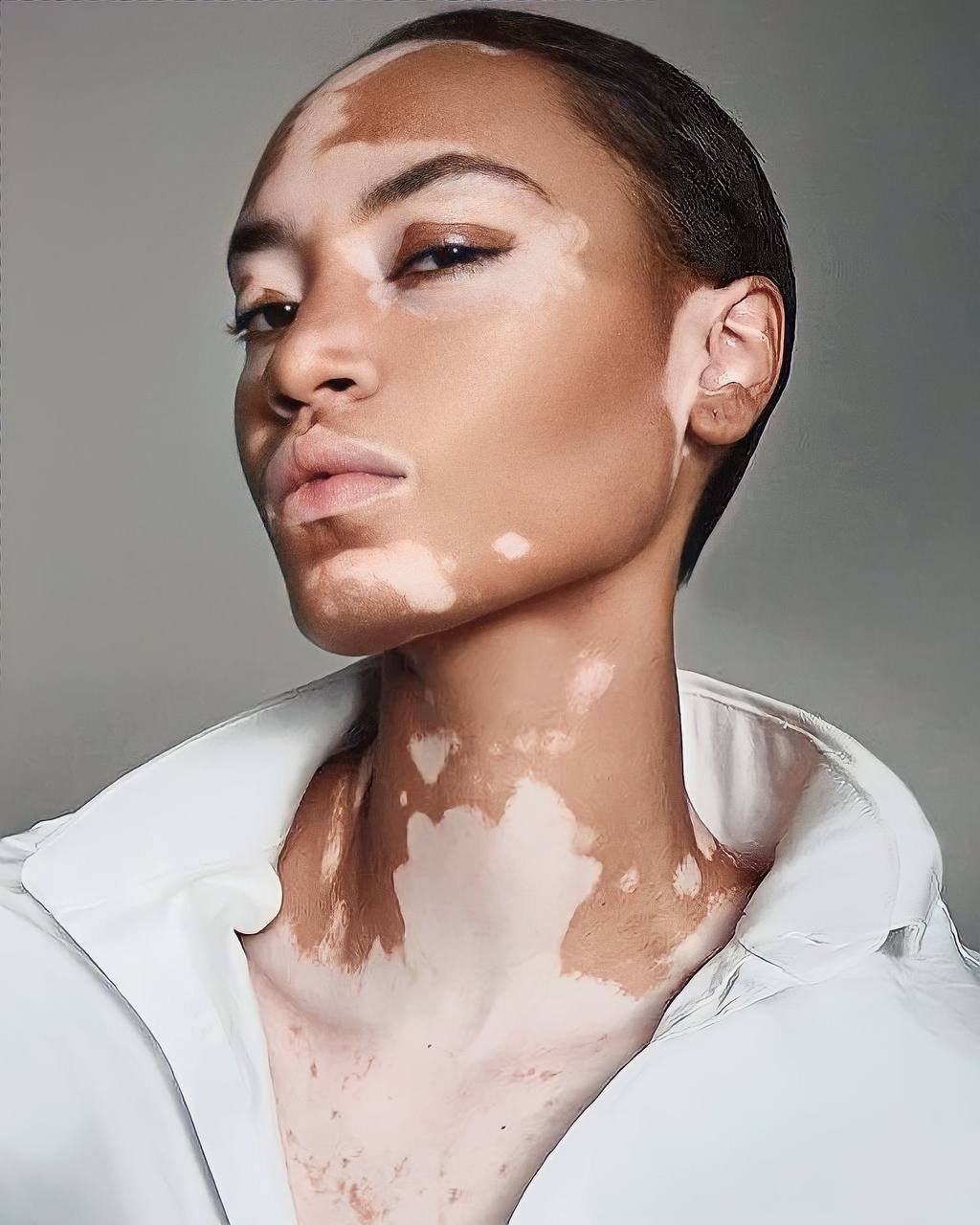
Diagnosing and Treating Tinea Versicolor
Tinea versicolor is usually diagnosed by a visual examination, and a Wood’s lamp (a UV light) may be used to enhance the visibility of the affected areas. Treatment typically involves the use of topical antifungal creams or lotions, or in some cases, oral antifungal medications. Over-the-counter dandruff shampoos containing selenium sulfide can also be effective as a body wash when left on the skin for 10 minutes before rinsing.
Understanding Vitiligo
Vitiligo is an autoimmune disorder where the body’s immune system attacks the melanocytes, leading to the loss of pigment in the affected areas. It can be associated with other autoimmune conditions, such as thyroid disease and type 1 diabetes. Vitiligo often starts to appear around the age of 20 and can be triggered by certain medications, including those used to treat certain cancers.
Diagnosing and Treating Vitiligo
Vitiligo is typically diagnosed through a visual examination, and in some cases, a skin biopsy may be performed to confirm the diagnosis. Treatment options for vitiligo include topical creams, oral medications, and light therapy (phototherapy). The choice of treatment depends on the extent of the affected areas and the individual’s response to the therapy.

Preventing Recurrence of Tinea Versicolor
To prevent the recurrence of tinea versicolor, it is essential to avoid excessive sweating, sun exposure, and heat. Wearing sunscreen, loose-fitting cotton clothing, and using anti-dandruff shampoo as a body wash can help reduce the risk of future outbreaks.
Does tinea versicolor ever go away on its own?
Tinea versicolor does not typically go away on its own. The condition is caused by an overgrowth of the Malassezia yeast, which lives on the skin but can proliferate in certain conditions. Treatment with antifungal medications or regular use of anti-dandruff shampoo as a body wash is usually necessary to clear up the rash and prevent recurrence.
Can you get vitiligo and tinea versicolor at the same time?
It is possible, but uncommon, to have both vitiligo and tinea versicolor at the same time. Vitiligo is an autoimmune disorder that causes a complete loss of pigment, while tinea versicolor results in only a partial loss of pigment. If an individual has both conditions, the different causes and appearances of the skin discoloration can help distinguish between the two.
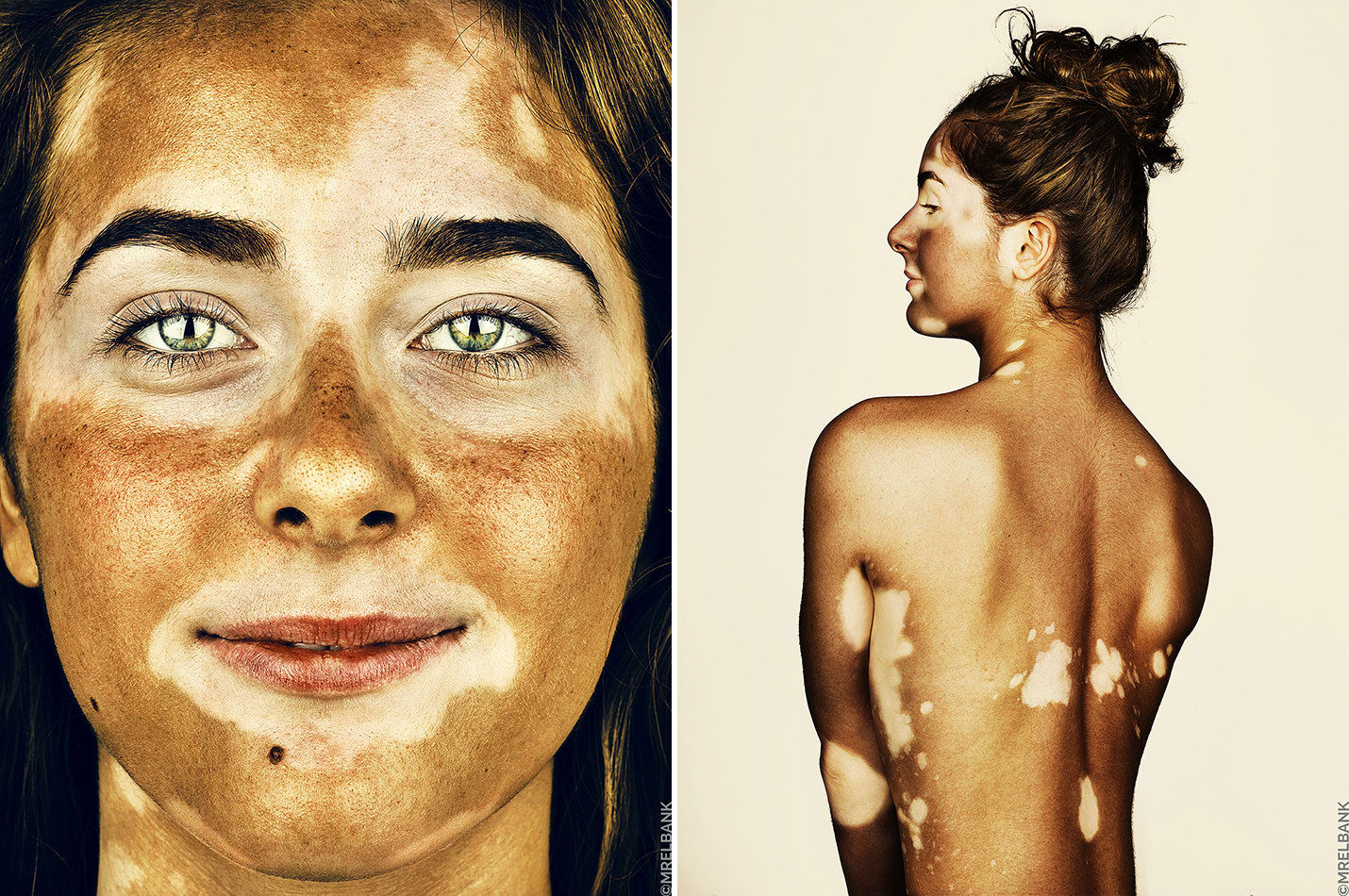
How long does it take for tinea versicolor to clear up with treatment?
The duration of treatment for tinea versicolor can vary, but it typically takes 2-4 weeks for the rash to clear up with the use of topical or oral antifungal medications. Some people may require a longer course of treatment, especially if the condition is recurrent. Maintaining good skin hygiene and avoiding triggers can help prevent future outbreaks.
Is vitiligo contagious?
No, vitiligo is not a contagious condition. It is an autoimmune disorder that causes the body’s immune system to attack the melanocytes, the cells responsible for producing pigment in the skin. Vitiligo cannot be spread from person to person through contact or any other means.
Can stress cause vitiligo to worsen?
Yes, stress is a known trigger for the development and worsening of vitiligo. Stress can stimulate the immune system and may lead to the further destruction of melanocytes, resulting in the expansion of existing vitiligo patches or the appearance of new ones. Managing stress through techniques like relaxation, mindfulness, and therapy can help minimize the impact of vitiligo.

What is the difference in appearance between tinea versicolor and vitiligo?
The main difference in appearance between tinea versicolor and vitiligo is the degree of pigment loss. Tinea versicolor causes partial loss of pigment, resulting in patches that are a few shades lighter than the surrounding skin. In contrast, vitiligo leads to a complete loss of pigment, leaving the affected areas chalk-white or milk-white in appearance.
Distinguish Between Tinea Versicolor and Vitiligo
If you notice light- or dark-colored areas on your skin, you may wonder what’s causing them and how to treat them. Two common causes of skin discoloration are tinea versicolor and vitiligo. Even though these skin conditions may look similar, they have different causes, and you’ll need to try different strategies to get them to clear up.
Jordan Abbott, MD, a dermatologist with Banner Health, explained more about what these conditions look like and how to treat them.
Tinea versicolor (TV), also called pityriasis versicolor, develops when too much yeast grows on your skin. The excessive yeast leads to a rash that looks like round flat patches which can be lighter or darker than the surrounding skin. It most often strikes the chest and back.
Vitiligo is an acquired disorder of depigmentation of the skin. “Normally your skin has pigment-producing cells called melanocytes. They produce melanin, which gives the skin its color. In vitiligo patches, these pigment-producing cells are absent,” Dr. Abbott said.
In vitiligo patches, these pigment-producing cells are absent,” Dr. Abbott said.
Both conditions can appear as light spots on the skin, and they don’t usually have any other symptoms. “If you didn’t see them, you wouldn’t know they were there,” Dr. Abbott said. In rare cases, tinea versicolor can be slightly itchy or dry. Neither condition is contagious, so don’t worry about catching TV or vitiligo if you touch someone who has it. Both can develop in people with any skin color.
How can you tell them apart?
TV and vitiligo usually affect different parts of your body. You’ll usually spot signs of vitiligo on the face, hands, elbows and knees. It’s unusual to see tinea versicolor on the hands or legs. TV is most common on the chest or back.
And the discoloration isn’t the same for both conditions. “While they both can have spots that are lighter than the surrounding skin, the color appears different to a trained eye,” Dr. Abbott said. TV can be a few shades lighter than the unaffected skin, due to decreased pigment in these spots. With vitiligo, the skin lacks all pigment in the affected areas, so it appears chalk or milk white.
With vitiligo, the skin lacks all pigment in the affected areas, so it appears chalk or milk white.
What to know about tinea versicolor
Tinea versicolor is a common fungal infection caused by a yeast called Malassezia, also known as Pityrosporum. This yeast normally grows on your skin and usually doesn’t cause any trouble unless here’s an overgrowth—that’s what causes tinea versicolor.
Heat, humidity and excessive sweating can trigger TV, so you see it more often in tropical climates. People also may develop this condition in the spring when the weather warms up. Oily skin is another risk factor, so it is more common in teens and young adults. And athletes are also at risk because of the sweaty, humid environment underneath their uniforms or workout clothes. To keep tinea versicolor infection from recurring, you should avoid excessive sweating, sun exposure and heat. Wearing sunscreen or protective clothing and opting for loose-fitting garments made of cotton can help reduce sweating.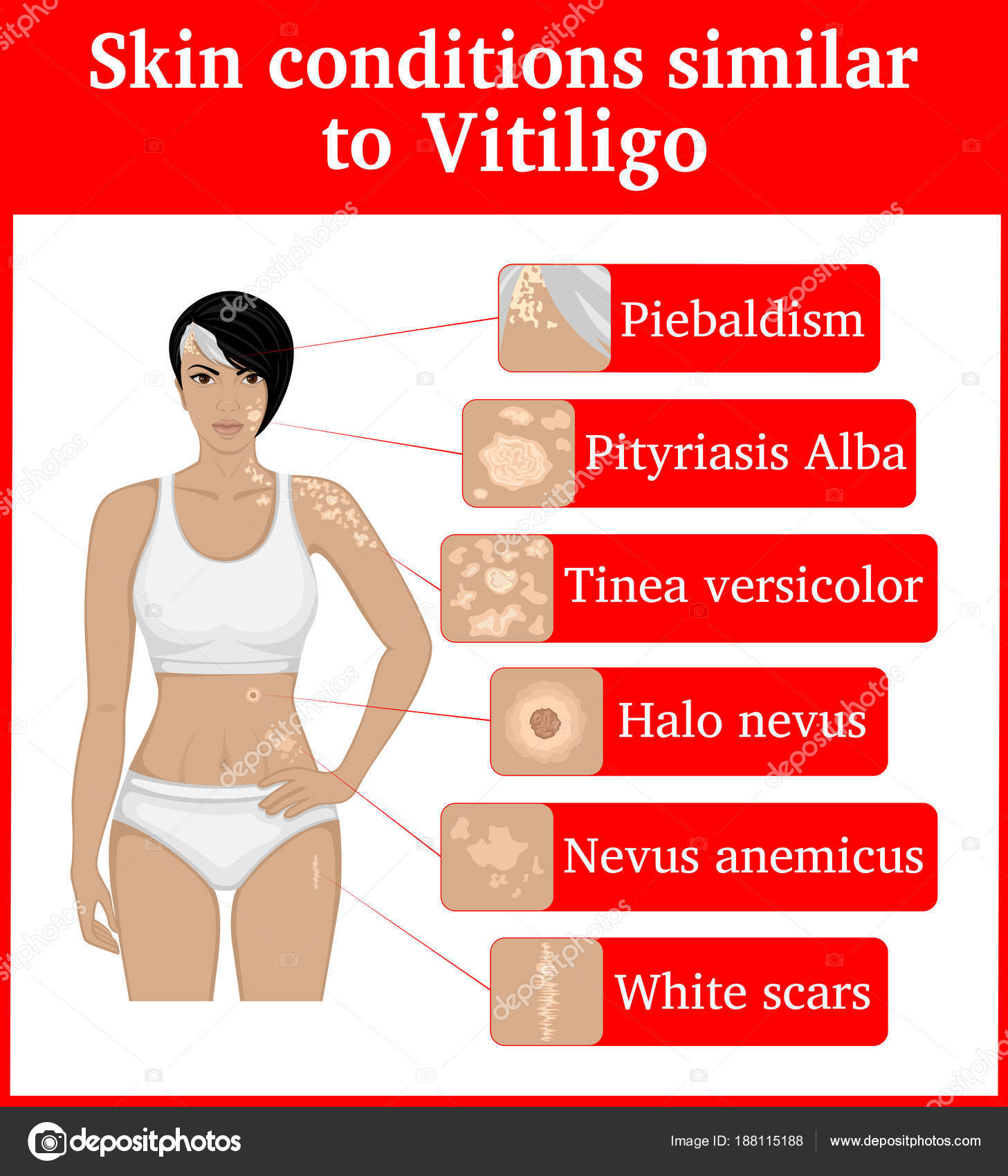
How to diagnose and treat tinea versicolor
Your health care provider can usually diagnose tinea versicolor by observation—it looks different than vitiligo and other skin conditions. They might use a tool called a Wood lamp which uses utraviolet light to see the patches more clearly.
If you’re diagnosed with TV, your dermatologist will probably recommend a short course of topical antifungal treatments you apply to your skin or take by mouth to help the rash clear up.
“It may sound funny, but one of the common treatments is to use anti-dandruff shampoo, like selenium sulfide (Selsun Blue) as a body wash in the shower,” Dr. Abbott said. That’s because the same yeast that causes TV may also cause dandruff. “It works best when you lather the product on your skin and allow it to sit for 10 minutes before rinsing.”
Some people who get tinea versicolor repeatedly use dandruff shampoo as body wash regularly to keep it at bay. Because the yeast that causes TV lives on your skin all the time, flare-ups are common.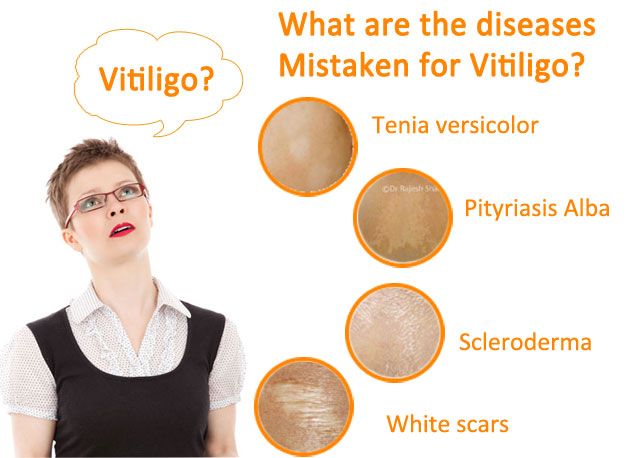
What to know about vitiligo
Vitiligo is believed to be an autoimmune disorder where your immune system’s cells attack the melanocytes that produce pigment in your skin. It can be associated with other autoimmune conditions such as thyroid disease and type 1 diabetes. People commonly see it start around age 20. Some medications, such as immunotherapy used to treat certain cancers, can trigger vitiligo.
How to diagnose and treat vitiligo
Like TV, doctors can often diagnose vitiligo by examining your skin. If they need more information, they may take a skin biopsy so the cells can be evaluated in a lab.
If you have vitiligo, your doctor may recommend skin creams, pills or light therapy (phototherapy) for treatment. If the affected areas are smaller (less than 5% to 10% of your skin), you’ll probably try a skin cream first.
If vitiligo is spreading quickly, your doctor may prefer an oral medication that can help slow down or stop the spread. “With vitiligo, the goal of treatment is initially to stop the progression. After that, the skin can begin to re-pigment,” Dr. Abbott said. Vitiligo can’t be cured, but it can be controlled. Some people use cosmetics to cover up the lighter areas.
After that, the skin can begin to re-pigment,” Dr. Abbott said. Vitiligo can’t be cured, but it can be controlled. Some people use cosmetics to cover up the lighter areas.
The bottom line
Tinea versicolor and vitiligo are two skin conditions that can look similar but have different causes and treatments. If you have light or discolored patches on your skin, your health care provider can figure out what’s behind them and recommend a treatment that can help clear up your skin.
Need help diagnosing or treating symptoms of tinea versicolor or vitiligo?
Schedule an appointment with a dermatologist.
Other useful articles about skin conditions
- Psoriasis and Five Similar-Looking Conditions You May Confuse With It
- Can Your Skin Condition Be Treated with Light Therapy?
- Here’s How to Break the Itchy Cycle of Hives
Dermatology
Tinea Versicolor vs. Vitiligo: What’s the Difference?
Tinea versicolor, also known as pityriasis versicolor, is a fungal infection that affects the top layer of the skin. This infection may be mistaken for vitiligo, as it causes discolored patches of lighter skin. Despite their similar appearances, tinea versicolor and vitiligo are very different skin conditions with their own causes and treatments.
This infection may be mistaken for vitiligo, as it causes discolored patches of lighter skin. Despite their similar appearances, tinea versicolor and vitiligo are very different skin conditions with their own causes and treatments.
If you have noticed any new or worsened skin symptoms, including discolored patches, talk to your health care provider or a dermatologist. They will be able to identify the cause of these changes and work with you to find the best treatment or management options.
Symptoms of Tinea Versicolor and Vitiligo
Both tinea versicolor and vitiligo only affect the skin. In some cases, tinea versicolor may not cause any symptoms. Both conditions can cause very similar changes in skin coloration.
What Do Tinea Versicolor and Vitiligo Look Like?
Both vitiligo and tinea versicolor can cause patches of discolored skin. Patches of skin affected by tinea versicolor may have sharply defined edges and appear lighter or darker than the surrounding areas.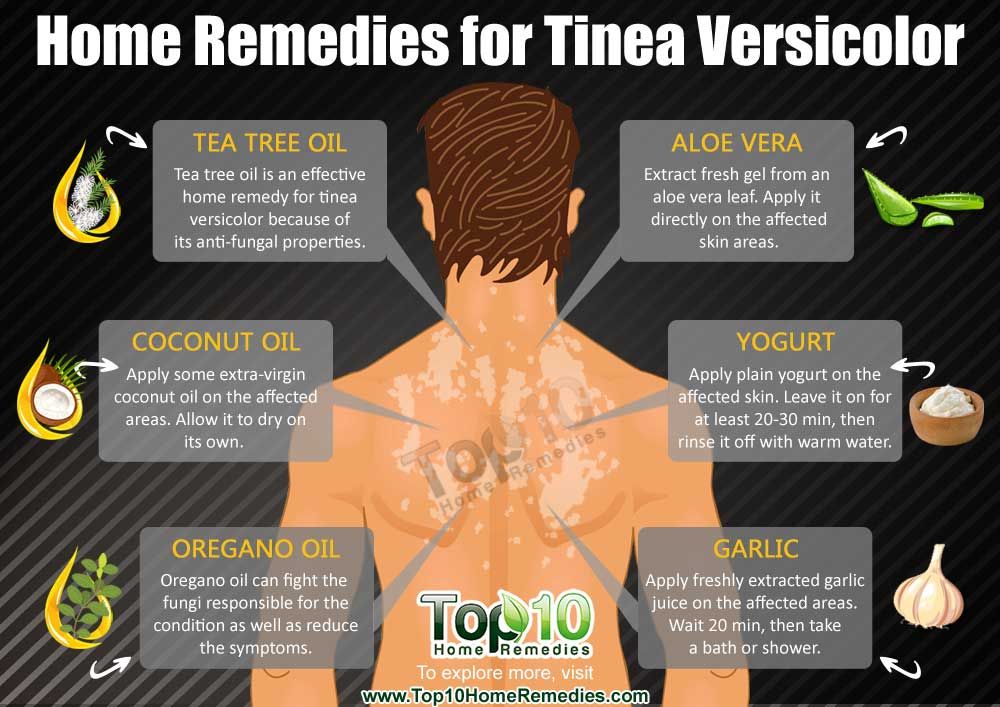 They may also appear brown, tan, pink, or yellow. These changes in skin color usually resolve after several weeks or months.
They may also appear brown, tan, pink, or yellow. These changes in skin color usually resolve after several weeks or months.
Patches of tinea versicolor may appear lighter or darker than the surrounding skin. (DermNet NZ)
Vitiligo, on the other hand, is characterized by permanent loss of skin color (also called loss of pigment or depigmentation). Areas of depigmentation may be a few shades lighter than a person’s natural skin tone or look completely white. Patches of depigmented skin may have smooth or jagged edges. Unlike in tinea versicolor, these skin patches usually have the same texture as a person’s unaffected skin.
Patches of vitiligo may be lighter than a person’s skin tone or completely white. (DermNet NZ)
Where Do Tinea Versicolor and Vitiligo Develop?
Tinea versicolor often affects the neck, but rarely the face. (DermNet NZ)
Both tinea versicolor and vitiligo cause discolored patches to appear on any part of the body. However, certain areas may be more susceptible than others.
Tinea versicolor tends to affect the neck, back, chest, upper arms, and stomach. It usually does not affect the face, hands, elbows, knees, and feet.
In vitiligo, depigmentation can occur anywhere. The most common locations include the face, neck, underarms, elbows, hands, knees, feet, and genitals.
Vitiligo often appears on the face and hands. (DermNet NZ)
Other Symptoms of Tinea Versicolor and Vitiligo
Vitiligo frequently doesn’t cause any other symptoms. Tinea versicolor, however, may lead to dryness and scaliness on the affected patches. People with the infection can also experience occasional mild itching or excessive sweating.
What Causes Tinea Versicolor and Vitiligo?
Neither vitiligo nor tinea versicolor are contagious — you cannot catch them from someone else, and you cannot give them to someone else. Aside from this commonality, however, the two conditions have very different causes.
Tinea versicolor is a skin condition that results from the overgrowth of Malassezia furfur — a type of fungus (yeast) that occurs naturally on the skin. Although this yeast is normally found on the surface of the skin, in some cases, it starts to grow out of control. When small colonies of Malassezia furfur start to form, they produce a substance that does not allow the skin to get darker when exposed to sunlight. This is what causes the hypopigmentation and other symptoms of tinea versicolor.
Although this yeast is normally found on the surface of the skin, in some cases, it starts to grow out of control. When small colonies of Malassezia furfur start to form, they produce a substance that does not allow the skin to get darker when exposed to sunlight. This is what causes the hypopigmentation and other symptoms of tinea versicolor.
In vitiligo, melanocytes — the cells responsible for making skin pigment — are destroyed, resulting in a loss of pigment and the appearance of lighter, depigmented patches. There are many theories about what causes vitiligo, but most researchers agree that, in most cases, vitiligo is an autoimmune condition. In other words, depigmented patches and other symptoms of vitiligo are caused by the body’s immune system thinking the body’s own melanocytes are foreign and attacking them.
Risk Factors for Tinea Versicolor and Vitiligo
Tinea versicolor is common among people who live in tropical and subtropical climates. People living in these warm, moist environments may even experience tinea versicolor throughout the entire year.
People living in these warm, moist environments may even experience tinea versicolor throughout the entire year.
The infection tends to affect those going through puberty, because people with particularly warm, oily, or moist skin are at higher risk. People with compromised immune systems — from taking corticosteroid medications or living with a condition like diabetes, for example — are also at an increased risk of developing tinea versicolor. It’s also possible to be genetically more susceptible to developing the infection.
One theory about the cause of vitiligo is that a trigger event causes stress to melanocytes in a person who is genetically predisposed to develop vitiligo. Researchers have identified an array of environmental factors linked to the development of vitiligo. These environmental factors may trigger vitiligo to develop in some people; in most people with vitiligo, the trigger is not known.
Vitiligo does not appear to be directly inherited from parents in any clear genetic pattern.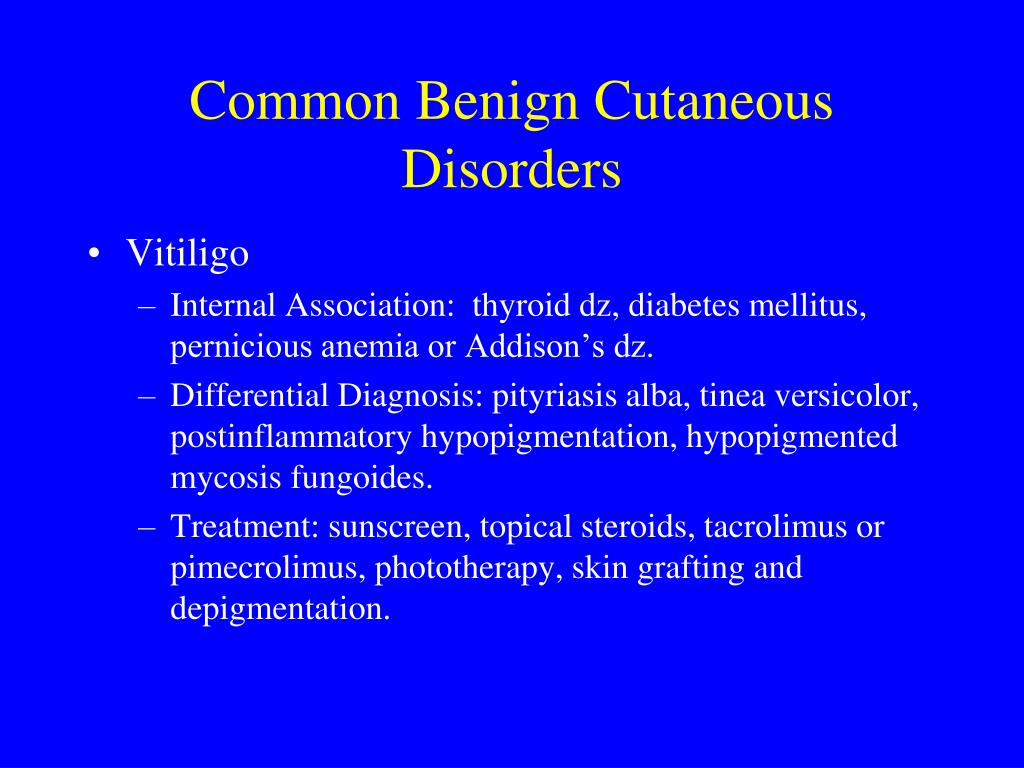 About 20 percent of people with vitiligo have a first-degree relative with vitiligo. Among identical twins, if one has vitiligo, the other has a 23 percent risk of developing the skin condition.
About 20 percent of people with vitiligo have a first-degree relative with vitiligo. Among identical twins, if one has vitiligo, the other has a 23 percent risk of developing the skin condition.
Diagnosing Tinea Versicolor and Vitiligo
Both tinea versicolor and vitiligo are usually diagnosed by a dermatologist — a skin specialist whose training allows them to distinguish between similar skin conditions. Typically, a dermatologist will look at a person’s medical history and conduct a physical examination. The dermatologist will conduct a full body examination to evaluate your skin for signs and symptoms of tinea versicolor or vitiligo.
In some cases, a dermatologist may also order blood work or remove a small sample of skin for examination. If they believe you may have tinea versicolor, this sample will be examined for the presence of yeast cells.
A doctor may also use a device called a Wood’s lamp, which emits ultraviolet light, to look at the skin more closely.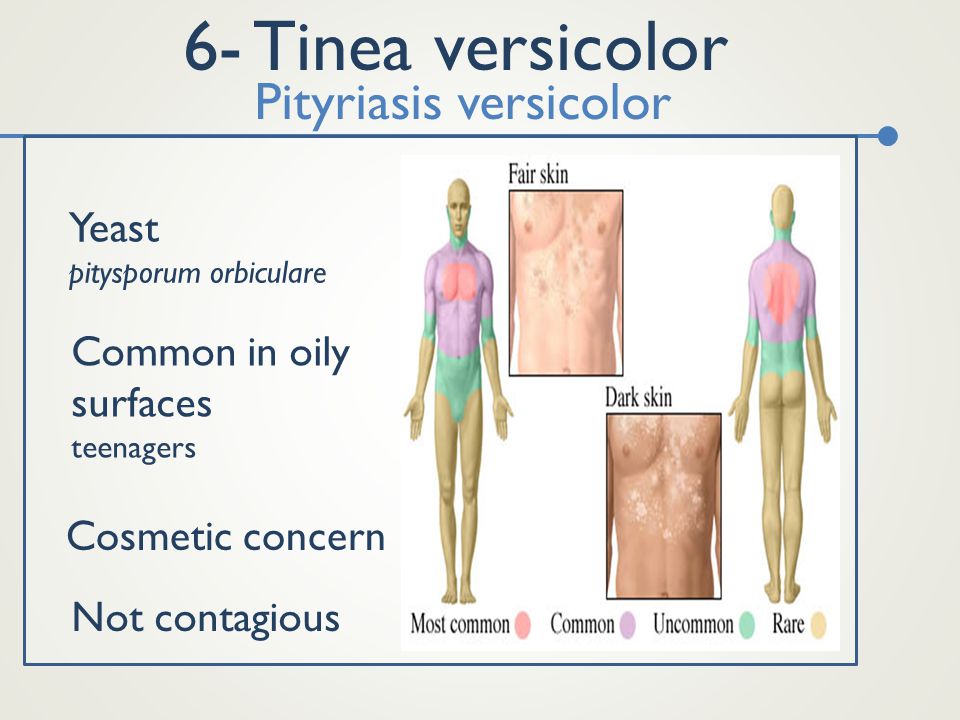 Using a Wood’s lamp allows your doctor to see the areas of discoloration more clearly, especially for people with lighter skin tones. The Wood’s lamp can help determine if skin depigmentation is caused by vitiligo, tinea versicolor, or another condition. If you have tinea versicolor, the affected patches will appear yellow-green.
Using a Wood’s lamp allows your doctor to see the areas of discoloration more clearly, especially for people with lighter skin tones. The Wood’s lamp can help determine if skin depigmentation is caused by vitiligo, tinea versicolor, or another condition. If you have tinea versicolor, the affected patches will appear yellow-green.
Learn more about how vitiligo is diagnosed.
Managing Tinea Versicolor and Vitiligo
There are several approaches to managing vitiligo, but the condition cannot currently be cured. Similarly, though tinea versicolor can be treated with medications and other therapies, the infection frequently comes back, since the yeast that causes it occurs naturally on the body.
Medications for Tinea Versicolor
Most people recover from tinea versicolor with medical treatment. Because it is a fungal infection, dermatologists treat the condition with antifungal medications, such as topical antifungals ketoconazole and miconazole.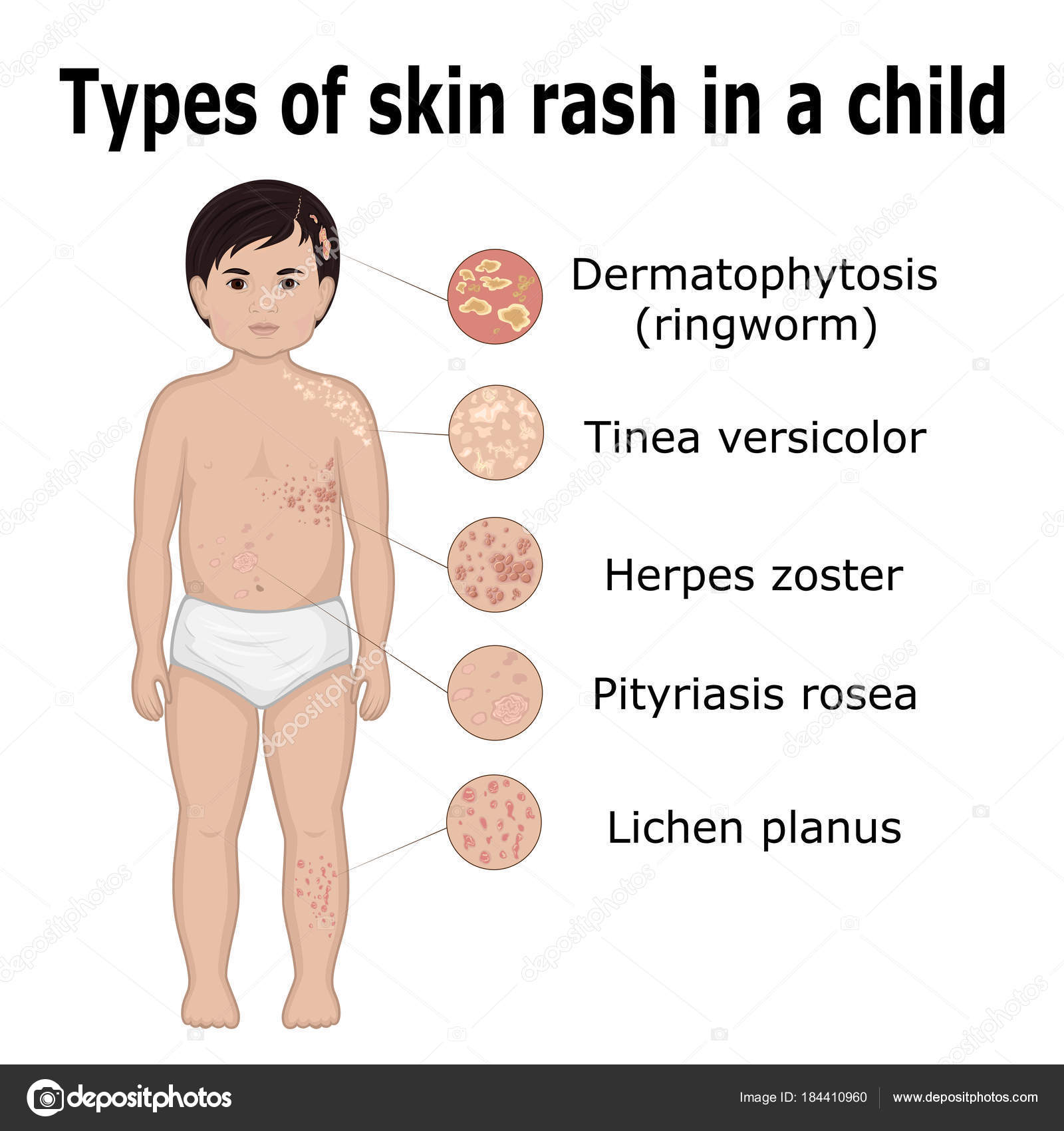 Shampoos containing selenium sulfide and ketoconazole are helpful treatments. More severe cases of tinea versicolor may require oral antifungal drugs like fluconazole. The type of medication your doctor prescribes will depend upon the location, severity, and extent of your symptoms.
Shampoos containing selenium sulfide and ketoconazole are helpful treatments. More severe cases of tinea versicolor may require oral antifungal drugs like fluconazole. The type of medication your doctor prescribes will depend upon the location, severity, and extent of your symptoms.
Medications for Vitiligo
Topical medication is usually the first line of treatment prescribed for vitiligo. Corticosteroids, the most commonly prescribed topical medication for vitiligo, are usually prescribed when the condition involves small areas of skin. These medications work by reducing inflammation and modifying the immune system. Tacrolimus is another topical medication that may be used alone or in combination with corticosteroids.
A new class of medications known as Janus kinase (or JAK) inhibitors are currently in development and will soon be available in topical and oral forms for vitiligo.
If vitiligo is worsening rapidly — with existing patches expanding and new patches emerging each week — a doctor may prescribe oral corticosteroids.
Other Treatments for Vitiligo
Doctors may recommend phototherapy, also known as light therapy, for vitiligo. This treatment works by using light to restore the skin’s lost color.
In cases where medication and phototherapy are not effective in treating generalized vitiligo, surgical procedures may be considered. Most surgical techniques used to treat vitiligo involve transferring skin or skin cells from an area of skin that is still pigmented to a depigmented area. In general, surgery is only considered for adults whose lighter patches have not changed for at least six months.
At-Home Management of Tinea Versicolor and Vitiligo
Your dermatologist may recommend ways of caring for your skin and managing your symptoms of tinea versicolor or vitiligo at home.
Skin Care
For people with tinea versicolor, the American Academy of Dermatology recommends wearing loose clothing and avoiding oily skin care products. If you’re unsure whether a product contains oil, look for packaging that reads “non-comedogenic” or “oil-free.”
If you’re unsure whether a product contains oil, look for packaging that reads “non-comedogenic” or “oil-free.”
If you live in a warm or humid climate, your dermatologist may also recommend using a medicated wash or skin cleanser regularly throughout the year to keep Malassezia furfur from overgrowing.
Sun Protection
The patches of discolored skin that develop in vitiligo and tinea versicolor do not tan with the surrounding skin. What’s more, vitiligo patches can still burn painfully in sunlight. Wearing sunscreen daily is important for both conditions. Sunscreen will help protect your depigmented skin and prevent lighter patches from standing out. The American Academy of Dermatology recommends applying sunscreen with a SPF of 30 or higher at least 20 minutes before getting out in the sun.
Meet Your Team
Living with vitiligo can be challenging. The good news is that you don’t have to go it alone. MyVitiligoTeam is the social network for people with vitiligo and their loved ones. Here, members from around the world come together to ask questions, offer support and advice, and meet others who understand life with vitiligo.
Here, members from around the world come together to ask questions, offer support and advice, and meet others who understand life with vitiligo.
Have anything to add to the conversation? Share your thoughts in the comments below or by posting on MyVitiligoTeam.
In partnership with the Global Vitiligo Foundation, which strives to improve the quality of life for individuals with vitiligo through education, research, clinical care, and community support.
References
- Tinea Versicolor — Cleveland Clinic
- Tinea Versicolor — Merck Manual Consumer Version
- Vitiligo: Overview — American Academy of Dermatology Association
- Vitiligo: Signs and Symptoms — American Academy of Dermatology Association
- Vitiligo — NHS
- Vitiligo Signs and Symptoms — AVRF
- Pityriasis Versicolor — NHS
- Vitiligo — Mayo Clinic
- Tinea Versicolor — Merck Manual Professional Version
- Vitiligo: Who Gets and Causes — American Academy of Dermatology Association
- Vitiligo — MedlinePlus
- Tinea Versicolor: Overview — American Academy of Dermatology Association
- Genetic Susceptibility in Pityriasis Versicolor — Dermatologica
- Recent Advances in Understanding Vitiligo — F1000Research
- Vitiligo: Pathogenesis, Clinical Variants, and Treatment Approaches — Autoimmunity Reviews
- Will My Children/Family Get Vitiligo? — UMass Chan Medical School
- Vitiligo — Questions and Answers — Vitiligo Research Foundation
- Diagnosing Vitiligo — NYU Langone Health
- Tinea Versicolor: Diagnosis and Treatment — American Academy of Dermatology Association
- Treatment Guidelines — Vitiligo Research Foundation
- Vitiligo: Diagnosis and Treatment — American Academy of Dermatology Association
- Steroids — MedlinePlus
- Advances in Vitiligo: An Update on Medical and Surgical Treatments — The Journal of Clinical and Aesthetic Dermatology
- Tinea Versicolor: Tips for Managing — American Academy of Dermatology Association
- Vitiligo — Harvard Health Publishing
- Vitiligo — American Osteopathic College of Dermatology
How to distinguish color deprive from vitiligo?
Show menu
Show categories
- Questions
- No answers
- Categories
- Users
- All categories
- Auto and transport
(313) - Business, finance
(366) - Children
(47) - Repair and construction
(282) - Food and drink
(416) - Internet
(121) - Computers and software
(312) - Beauty, fashion, style
(505) - Culture and society
(632) - Medicine and health
(808) - Education and science
(938) - Real estate
(60) - Nature
(755) - Psychology
(238) - Trips
(22) - Sports, fitness
(105) - Engineering and electronics
(639) - Hobbies and entertainment
(145) - Law and law
(286)
- Questions
- No answers
- Categories
- Users
Ask a question
- All categories
- Auto and transport
(313) - Business, finance
(366) - Children
(47) - Repair and construction
(282) - Food and drink
(416) - Internet
(121) - Computers and software
(312) - Beauty, fashion, style
(505) - Culture and society
(632) - Medicine and health
(808) - Education and science
(938) - Real estate
(60) - Nature
(755) - Psychology
(238) - Trips
(22) - Sports, fitness
(105) - Engineering and electronics
(639) - Hobbies and entertainment
(145) - Law and law
(286)
3,745 views
asked
Christina
(1. 998 points)
998 points)
in the category Medicine and health
1 Answer
Similar questions
How to distinguish vitiligo from lichen?
asked
Christina
(1,998 points)
in the category Medicine and health
How to distinguish lichen from diathesis?
asked
Christina
(1,998 points)
in the category Medicine and health
How to distinguish lichen from allergies in a child?
asked
Christina
(1.998 points)
in the category Medicine and health
How to distinguish lichen from dermatitis?
asked
Innamorato
(3,151 points)
in the category Medicine and health
…
Pityriasis versicolor. What is pityriasis versicolor?
IMPORTANT
The information in this section should not be used for self-diagnosis or self-treatment. In case of pain or other exacerbation of the disease, only the attending physician should prescribe diagnostic tests. For diagnosis and proper treatment, you should contact your doctor.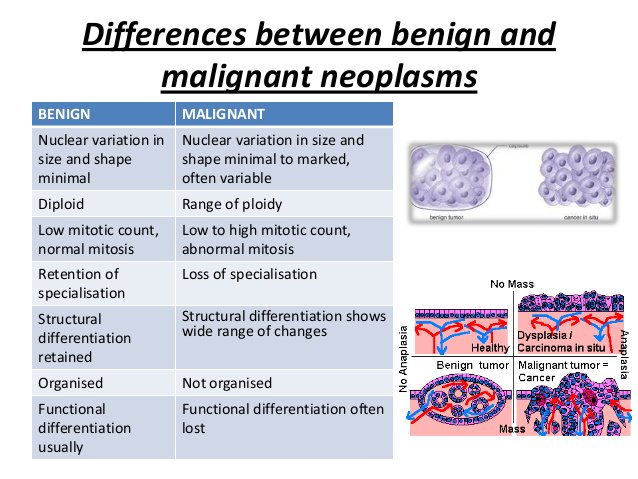
Pityriasis versicolor is a long-term fungal disease affecting the epidermis, which is manifested by the appearance on the skin of pigmented spots of various shades: yellow, pink, brown, brown and characteristic pityriasis peeling. There are no signs of inflammation. Pityriasis versicolor is diagnosed using the Balzer iodine test, fluorescent examination and microscopy of exfoliating scales. Treatment is carried out with antifungal ointments and solutions. Pityriasis versicolor of the common form requires general antimycotic therapy.
- Causes of pityriasis versicolor
- Symptoms of pityriasis versicolor
- Diagnosis of pityriasis versicolor
- Treatment of pityriasis versicolor
- Prophylaxis
- Prices for treatment
General information
Pityriasis versicolor is so named because of its typical flaking. The second name – multi-colored lichen – arose due to the various colors of the spots that appear during the disease. The common name “solar fungus” also refers to pityriasis versicolor. It is due to the fact that under the influence of sunlight, the affected areas of the skin become brighter and more noticeable. Most often, pityriasis versicolor affects men and women of young age, most rarely – children under 7 years of age.
The common name “solar fungus” also refers to pityriasis versicolor. It is due to the fact that under the influence of sunlight, the affected areas of the skin become brighter and more noticeable. Most often, pityriasis versicolor affects men and women of young age, most rarely – children under 7 years of age.
Pityriasis versicolor
Causes of pityriasis versicolor
Pityriasis versicolor belongs to the group of keratomycosis – fungal skin diseases that affect only the stratum corneum of the epidermis and the hair cuticle. Its causative agents are the fungi Malassezia furfur, Pityrpsporum orbiculare and Pityrosporum ovale, and these species differ in their ability to pass one into another. Usually, pityriasis versicolor is characterized by low contagiousness, that is, infection occurs only in some cases with close and prolonged contact with the patient. At the same time, the likelihood of getting sick with pityriasis versicolor is largely due to predisposing factors.:max_bytes(150000):strip_icc()/treatment-of-tinea-versicolor-1069275-01-660723070d7e4e0b9a988668f6381ed4.png)
Factors that form a favorable background in the body for the development of pityriasis versicolor are: weakening of the immune system, excessive sweating, endocrine disorders (diabetes mellitus, Itsenko-Cushing’s syndrome, obesity), changes in the chemical composition of sweat, vegetative-vascular dystonia, violation of the barrier skin functions with frequent use of antibacterial gels and soaps, stressful effects on the skin (excessive tanning, solarium, etc.). The authors of some studies conducted in dermatology indicate that in some cases pityriasis versicolor is associated with lymphogranulomatosis and pulmonary tuberculosis.
Symptoms of pityriasis versicolor
Pityriasis versicolor is caused by the multiplication of pathogens in the superficial layers of the skin, which leads to disruption of the functioning of melanocytes – cells that produce the pigment melanin, which gives the skin a particular color. As a result, the affected area of the skin acquires a color that differs from the rest of the skin. The process begins at the mouth of the hair follicle, then the spot gradually increases in size.
The process begins at the mouth of the hair follicle, then the spot gradually increases in size.
With pityriasis versicolor, the formation of multiple rounded spots up to 1 cm in size is typical. As the spots grow, they merge with each other, forming large areas that reach the size of an adult’s palm. Such spots do not protrude above the surface of the skin and do not have signs of inflammation (swelling, redness, soreness). Their color can be yellow, coffee, pinkish brown, dark brown. The edges of the spots of pityriasis versicolor are clearly delimited, uneven, scalloped. Characteristically due to loosening of the stratum corneum of the epidermis, peeling of spots, easily detected when scraping the skin.
Most often, pityriasis versicolor appears on the skin of the back and chest. The neck, lateral parts of the trunk and abdomen are less commonly affected. In children and adolescents, spots can be localized on the skin of the extremities, in the armpits and on the scalp. There is no symmetry.
There is no symmetry.
A patient with pityriasis versicolor usually does not report any subjective sensations. In some cases, there is slight itching in the areas of skin lesions. The occurrence of soreness, burning or other unpleasant sensations indicates a secondary infection of the skin with a bacterial flora.
Pityriasis versicolor has a long (several years) course. In the absence of systematic therapy after treatment, recurrence of the disease is possible. Pityriasis versicolor is often cured by exposure to sunlight. Areas previously affected by lichen do not tan and remain white against the background of tanned skin (pseudo leukoderma).
Diagnosis of pityriasis versicolor
Pityriasis versicolor is often immediately diagnosed at a dermatologist’s consultation during examination and dermatoscopy of skin areas with discoloration. To confirm the diagnosis, the Balzer iodine test is performed, which consists in applying 5% alcohol solution of iodine to the skin.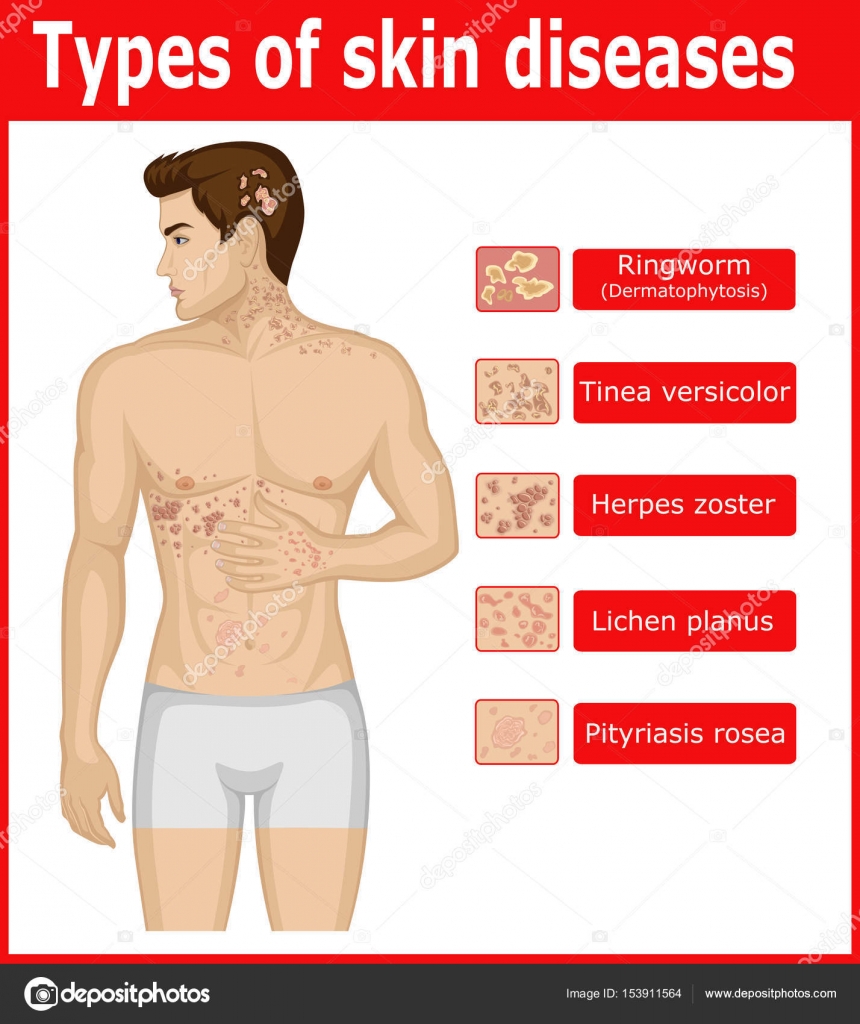 Due to the looseness of the affected areas of the epidermis, the skin in these areas absorbs iodine better and stains more intensely than in healthy areas. With the same success, solutions of aniline dyes can be used for the test: brilliant green, iodine, fukartsin. The presence of Besnier’s symptom or the “chip phenomenon” is also determined: peeling of the skin with a slight scraping of it on the surface of pityriasis versicolor spots.
Due to the looseness of the affected areas of the epidermis, the skin in these areas absorbs iodine better and stains more intensely than in healthy areas. With the same success, solutions of aniline dyes can be used for the test: brilliant green, iodine, fukartsin. The presence of Besnier’s symptom or the “chip phenomenon” is also determined: peeling of the skin with a slight scraping of it on the surface of pityriasis versicolor spots.
Luminescent diagnostics, carried out in a special darkened room, reveals red-yellow or dark brown fluorescence spots. Microscopic examination of scrapings with pityriasis versicolor allows you to detect elements of the fungus in the scales of the epidermis.
Differentiate pityriasis versicolor from rosacea based on the clinical picture. Pink lichen is characterized by an oblong and rhomboid shape of lesions, localization of spots along the lines of skin tension. Foci of pseudoleukoderma remaining after pityriasis versicolor is resolved are differentiated from vitiligo, secondary hypopigmentations, and leprosy.
It is also necessary to distinguish pityriasis versicolor from syphilitic roseola, and patches of pseudoleukoderma from syphilitic leukoderma. Syphilitic roseola does not peel off, has a pink color, disappears when pressed. Syphilitic leukoderma in its appearance resembles a lacy mesh, and not confluent spots of reduced pigmentation. To differentiate pityriasis versicolor from syphilitic manifestations, the following tests may be prescribed to the patient: microscopy of scrapings for pale treponema, PCR diagnosis of syphilis, or RPR test.
Treatment of pityriasis versicolor
Treatment is carried out on an outpatient basis until the manifestations of pityriasis versicolor disappear completely. Local antifungal agents are used: 5% salicylic ointment, 3-5% salicylic alcohol, 5-10% sulfuric ointment, 3-5% resorcinol alcohol, terbinafine, bifonazole, clotrimazole, cycloperox, terbinafine, naftifine, etc. Common pityriasis versicolor or its a relapsing course is an indication for general antifungal treatment.